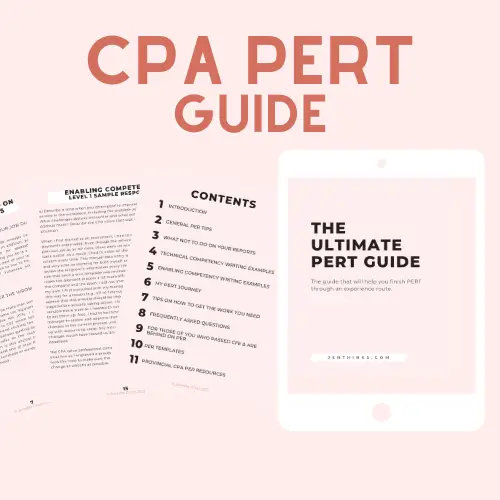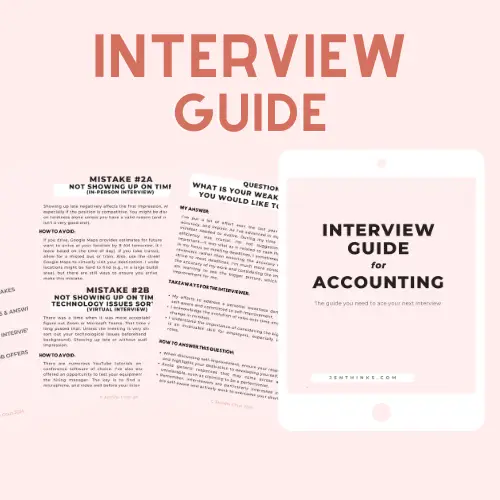In my last post, I talk about the importance of debriefing cases. It is an important skill to master over time so you are set up for success for the 3-day CFE (Common Final Examination). Now, I want to share with you how I debrief. Note, my process is still evolving as I continue on my CPA journey. My way is one of the many ways you can debrief but they all share the same goal: to find a way to achieve competency efficiently.
What Exactly Do I Want Out of Debriefing Cases?
I want to first talk about what I expect to get out of debriefing cases because it is difficult to do something without fully understanding the reasoning behind it.
When you debrief a case properly, you will achieve the following:
– know what you did very well (CD – which is not always the best-case scenario, by the way)
– know what you did right (C)
– know what you did not do enough on but on the right track (NC, RC)
– know what you did not do (NA)
Having the above knowledge is the only way you will improve in case-writing. The reason why a CD is not the best-case scenario is that it means you spent more time than you needed on that AO (assessment opportunity). Since time is the most valuable resource during an exam, you want to do just enough for all AOs instead of too much for one. The only way you will know how much is just enough is if you debrief properly.
The rest of the rankings all provide valuable feedback. For example, if you got a NA, you will use that feedback to identify the trigger you missed by debriefing. If you got an NC or RC, you will find out what more did you have to do to achieve a C.
Remember, good enough is enough.
*NA = Not Addressed, NC = Nominal Competency, RC = Reaching Competency, C = Competent, CD = Competent Distinction
~ More CPA Posts ~
CPA PEP Core 1 – How to Study for the Module and the Exam
CPA PERT – Ultimate Guide on How to Get Your First Experience Report via EVR Approved
CPA PERT – Enabling Competencies Examples
Densmore for CPA PEP – Are The PEP Essentials Packages Worth It?
CPA PEP Module – Regular Module or Extended Module?
When Should I Debrief?
When possible, I debrief as soon as I am done attempting a case. However, it is not easy to do so especially when you work on your assignments in the evening after work. As cases range from 60 to 90 minutes for PEP modules, it might be hard to carve out 3 hours on a weeknight.
However, my suggestion is still to try to debrief as soon as possible after writing a case. If you work on the case on Monday, you can debrief on Tuesday. This way, the information from the case and the reasoning behind why you wrote what you did will still be fresh in your mind. This will save you time from having to read the case material again.
Also, during a PEP module, debriefing your cases early on will allow you to “forget about the solutions” and attempt the cases just before the exam as part of your study process.
How To Debrief CPA Cases – Step-by-Step Process
Note, if you follow my suggestion of debriefing right after you write the case, you will not have your case marked by your facilitator in time. That is fine as I am often able to gauge how I did by comparing my attempt with the solutions.
Step 1 – Read the Annotated Version of The Case
I find the annotated version of the case helpful in understanding what triggers I might have missed when I read the case. Also, it is helpful to see how pieces of information were related to different Requireds. This part should take you less time than when you first read the case as you would have already read it once or twice.
Important Takeaways: triggers, appendices
Step 2 – Read The Sample Response
The Sample Response showcases the level of competency expected of a candidate writing under the time constraint (e.g., 60 minutes). They are shorter and much more achievable than the Solution (Step 3). I use this to gauge what is good enough. If you look at the feedback guide for the sample response, you will realize there might be one or two NAs. This just shows that the goal is not to achieve perfection as it is nearly impossible to do so given the time constraint. The goal is to achieve both breadth and depth.
When I go through the sample response, I would compare it against my attempt. From there, I make notes of the following:
– how I could have approached and organized my quantitative analysis more efficiently
– how I could have performed my qualitative analysis more efficiently by connecting case facts and highlighting the most important points (e.g., issues that have an impact on going-concern)
– what did I miss completely (e.g., an AO, an important case-fact)
Important Takeaways: more efficient analysis, missed/misinterpreted case-facts, missed AO
Step 3 – Read The Solution
The reason why I choose to read the Sample Response first is that the Solution can be intimidating. Unlike the Sample Response, the Solution showcases the level of competency that is not expected of a candidate under the time constraint. As stated in the Solution itself, it is a “best” response.
I would read through the Solution and make further notes on the points mentioned in Step 2. The Solution will be the perfect supplement for the Sample Response as it will have addressed all AOs on the feedback guide. This will be the perfect opportunity to make sure your notes are complete.
Important Takeaways: notes on the AO not addressed by Sample Response, alternative way to attempt an AO
Step 4 – Organize Your Debrief Notes
As I have mentioned, my debriefing process has evolved over time and will continue to do so. I used to organize my debrief notes by assignment number. For example, I would have a section of notes for Practice Case #1 and another section for Practice Case #2.
Starting with the Finance module, I am categorizing my debrief notes by topics. For example, I have a section titled Ratio Analysis Banks that is further broken down by different financial ratios. I have notes on how to interpret the different ratios or common causes that I learned from the cases. This takes a little bit more work than the old way but it will be more useful for studying.

As you debrief more cases, your knowledge bank will become more complete. This will be valuable as the 3-day CFE will be cases-only.
Conclusion
Debriefing is a mandatory process for learning even though it is not graded like an assignment or MC. The challenging part is to recognize the importance of it early so you have plenty of time to practice. The earlier you master the skill, the easier your CPA journey will be.



Thanks for sharing this! I really like the way you are putting the advice, clear and organized. I just completed Core 2 in June, and I am studying PM now. I was looking for ways to better debrief and saw this article. I will try the method of categorizing the issues by topic instead of by week, which seems a very good method. 🙂
Hey Andrea.
I am really glad you liked the format and found it useful 🙂 I hope it works well for you but don’t hesitate to let me know if you found a better way. I only started categorizing recently so I won’t know how effective it will be until exam time in Dec (extended for me).
Best of luck with PM!!
Jen